Goalkeepers have had plenty of time in the spotlight at this year’s World Cup. Wales’ Wayne Hennessy received the only straight red card of the tournament so far for an outside of the box collision with an opposition player. Saudi Arabia’s Mohammed Al Owais received plaudits for his display in the shock win over Argentina and also knocked out his own teammate with an accidental knee to the head. Domink Livakovic saved four penalties across two shootouts to help Croatia reach the semi finals, while no opposition shot has gotten past Yassine Bounou, save for an own goal from Moroccan teammate Nayef Aguerd, until the Semi Finals.
Credit where it is due, the goalkeepers have been in fine form overall. The only disappointing thing about the men between the sticks this year is no fault of their own. Nike, Adidas, Puma and the rest have let them down with their shirts at this year’s tournament, but it’s not the first time. Goalkeeper kits have been becoming increasingly bland and monotone for a long time now, and though sportswear manufacturers are directly responsible for the shirts produced, a large part of the blame lies with FIFA. Changes to their equipment rules have narrowed the scope significantly on how much freedom brands have with their kit designs.
The current sea of block colour goalkeeper jerseys makes us long for days gone by, when you may not have been overly confident about your goalie’s ability to save penalties, but at least there was a decent chance that his wildly flamboyant shirt would distract the taker. Some spectacular keeper shirts have graced the World Cup over the years, with a strong concentration of them occurring during one decade in particular. Limiting our selection to one entry per team, we’ve chosen our top ten World Cup goalkeeper shirts of all time.
10 – Spain 2010
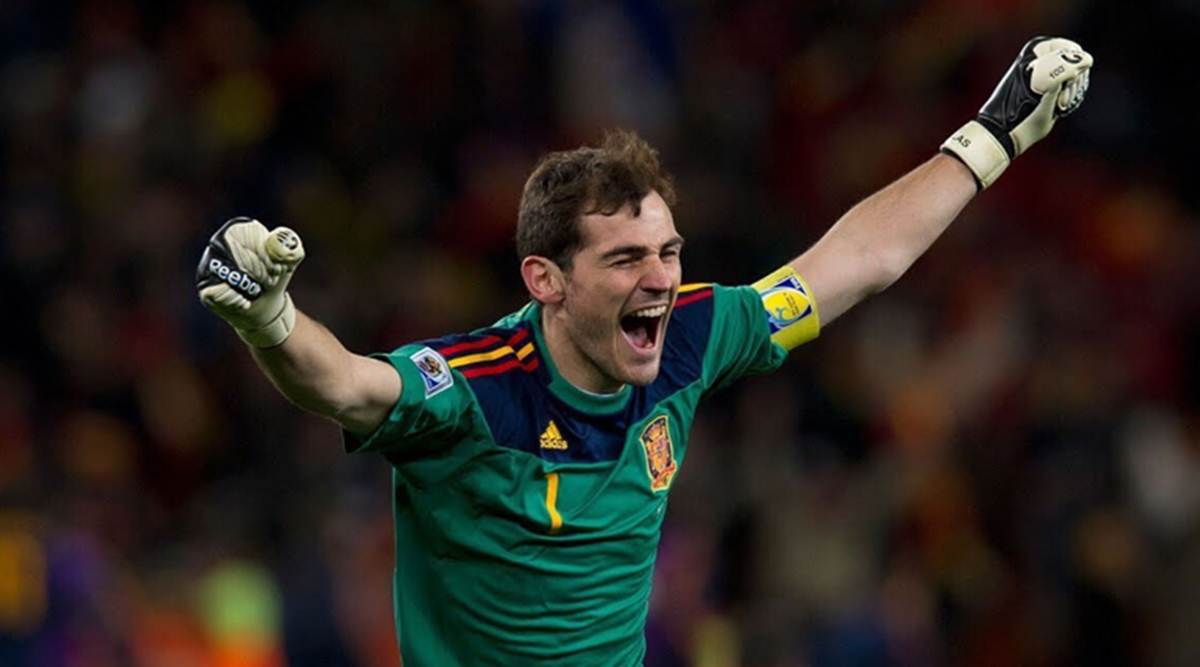
The most recent World Cup to feature on this list for the aforementioned reasons, 2010 did produce one nice keeper shirt, free of crazy patterns however. Adidas gave Iker Casillas a pretty simple shirt, harking back to the early days when it was the standard for custodians to wear green, while the Spanish tricolour was worked into the three stripes on the shoulders. Casillas captained Spain to the final, lifted the trophy as captain and passionately kissed the reporter conducting his post-match interview after the final, all while wearing the shirt (the reporter happened to be his girlfriend at the time, Sara Carbonero). Not bad.
9 – Italy 1982
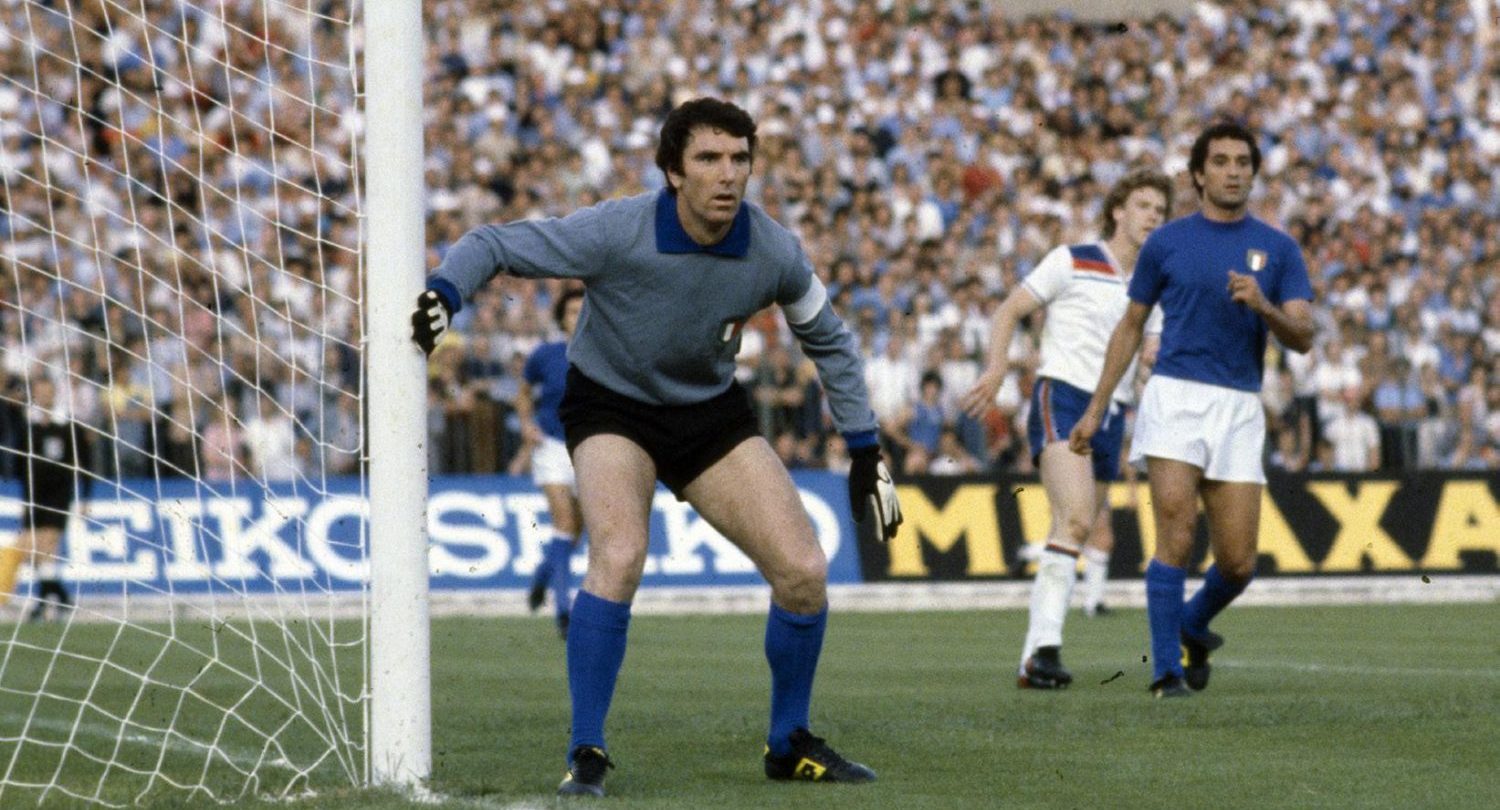
From the most to the least recent, next up is Dino Zoff’s famous grey number from the 1982 campaign that entitled Italy to a third star above their crest. A grey shirt had been a staple for Italy’s goalkeepers even before Zoff’s time, and the trend has continued into the modern day, sometimes even crossing into silver territory. The 1982 edition looked more like a cotton jumper worn over a blue polo shirt than a football kit, which was really a very suitable look for a 40 year old like Zoff.
8 – Croatia 1998
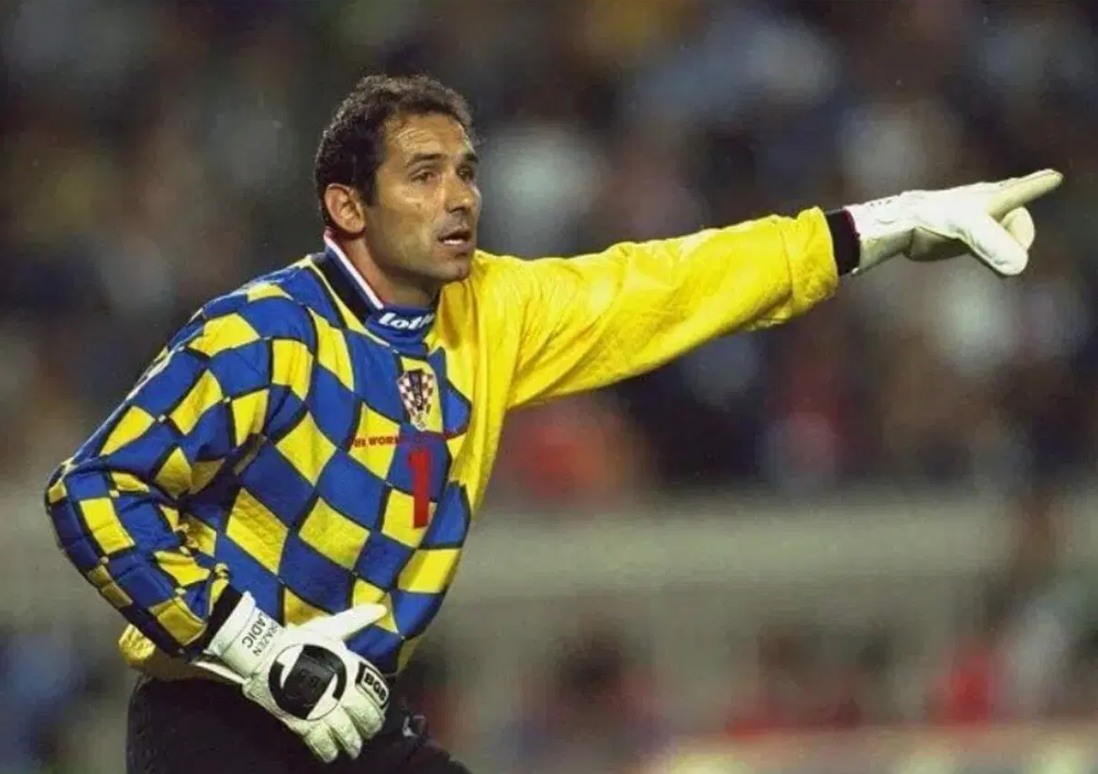
Everyone associates yellow shirts with Brazil and orange with the Netherlands, even though they aren’t the only countries to play in those colours. Croatia’s chequered shirts, on the other hand, are truly unique in international football. At their first ever World Cup in 1998, kit makers Lotto obviously didn’t want Dražen Ladić to feel left out, so they made him a jersey bearing the same design as the outfield players’, recreating a flag blowing in the wind. We’re used to seeing those famous red and white squares by now, but the yellow and blue colourway worn by Ladić was really something special, more so considering that Croatia stopped producing chequered goalkeeper kits after that tournament.
7 – South Korea 1994
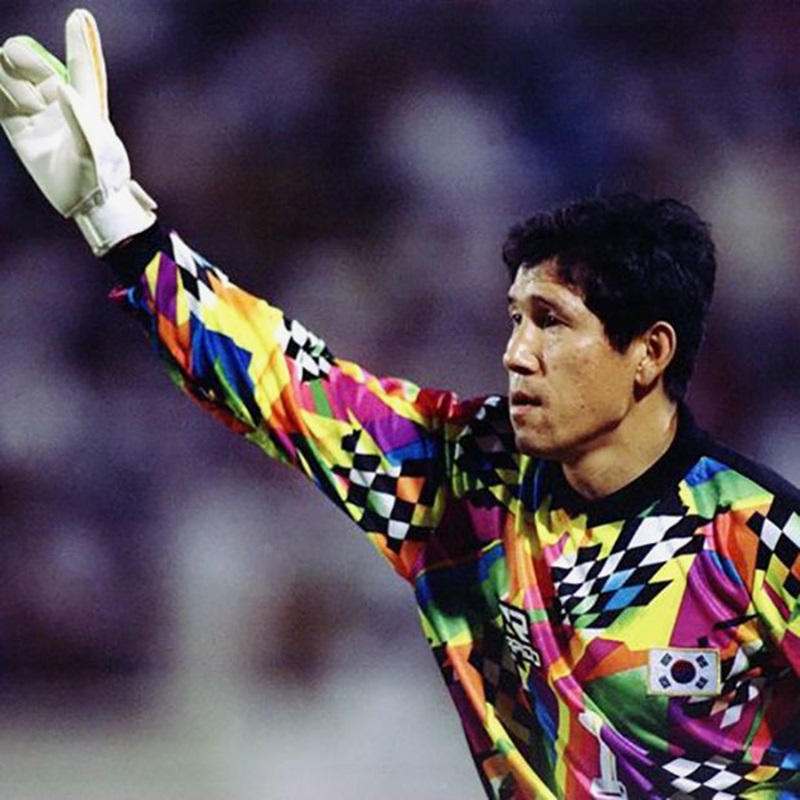
At USA 94, South Korea were kitted out by Chinese brand Rapido. Their home and away shirts bore stylish designs with well proportioned, nicely coloured graphics that were really much too sensible for their era. Those shirts wouldn’t look out of place in the modern age, though their goalkeeper shirt was pure 90s mayhem, as all the best keeper kits are. All the colours of the rainbow mixed together with some checkerboard sections thrown in for good measure. Unfortunately for Korea, there were no extra points given for having the best kits in the group, so they went home early after two draws and a loss to Germany.
6 – Morocco 1994
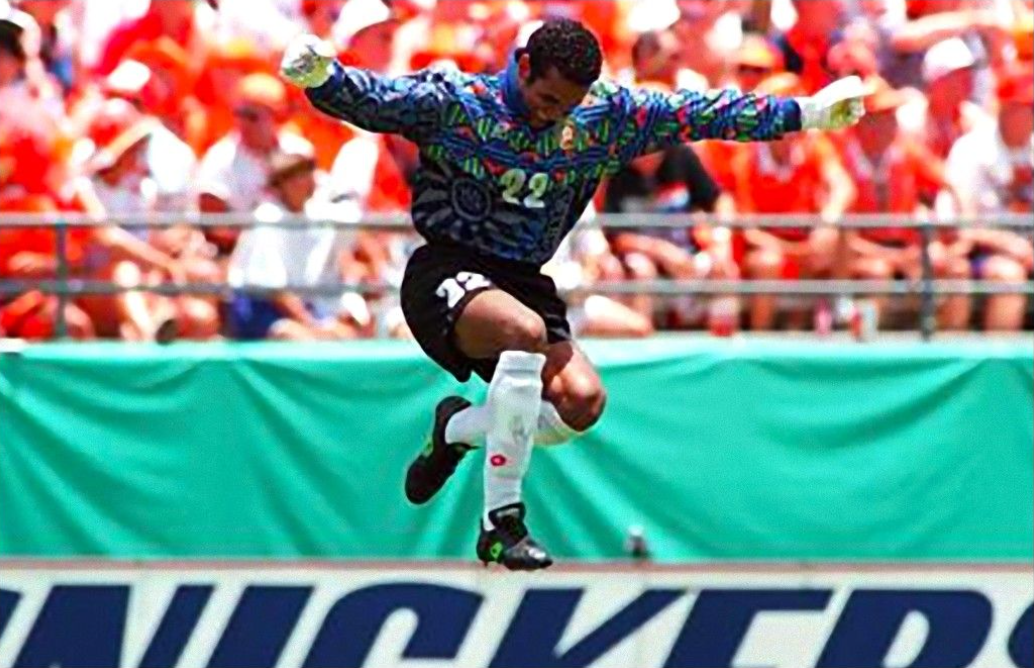
Lotto’s second appearance on this list, but unlike their first, Morocco’s goalkeeper shirt in 1994 did not mirror that of the outfield players. Instead, it looked like two separate jerseys stitched together. Although it’s possible that the patterns used were inspired by traditional Moroccan crafts, at first glance the top part resembles a double helix drawn in the style of ancient Aztec art, while the graphic on the bottom looks like a sundial/sliced lemon/compass/sunflower. Either way, the combination of the patterns and colours very much captured the essence of goalkeeper kit design at the time.
5 – Brazil 1994
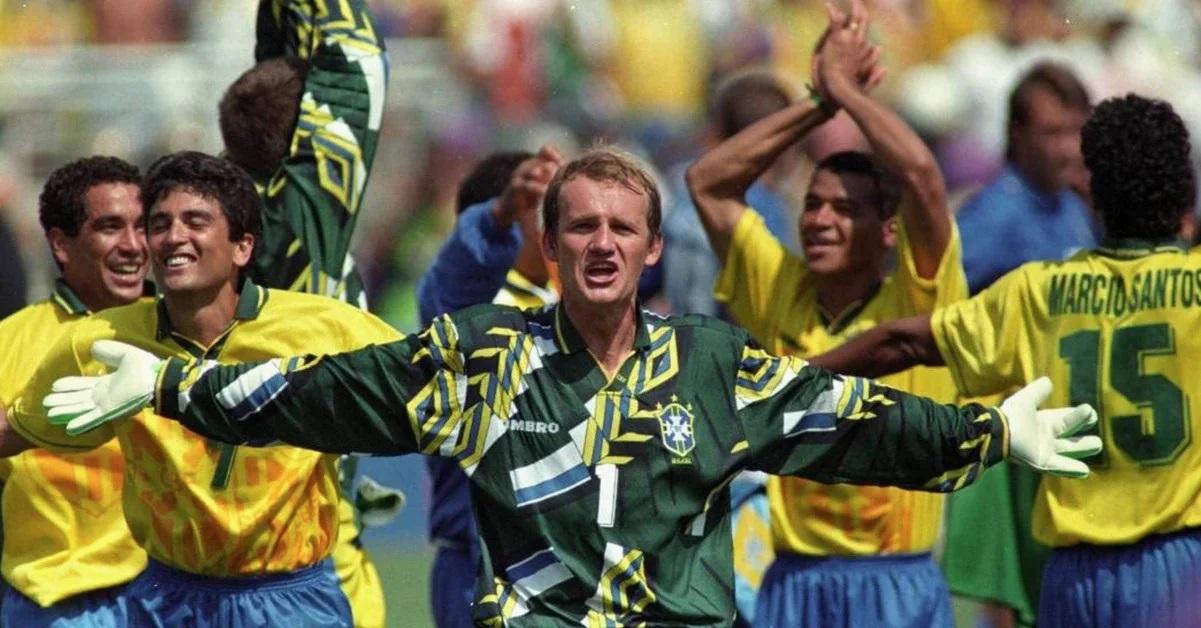
Is it possible that the kit designers in 1994 took the host country’s identity into consideration when drawing up their goalkeeper shirts ahead of the World Cup? Were the jerseys created with America’s view of sport as blockbusting entertainment in mind, fit to be paraded at the circus-like opening ceremony? Probably not, but they suited the context anyway. Umbro produced a fetching green top for Claudio Taffarel of Brazil, with yellow, blue and white flourishes bringing it to life. Taffarel only conceded three goals in the whole tournament as Brazil were crowned champions, while a teenage Fenomeno Ronaldo got his first winners medal but remained an unused substitute.
4 – Argentina 1990
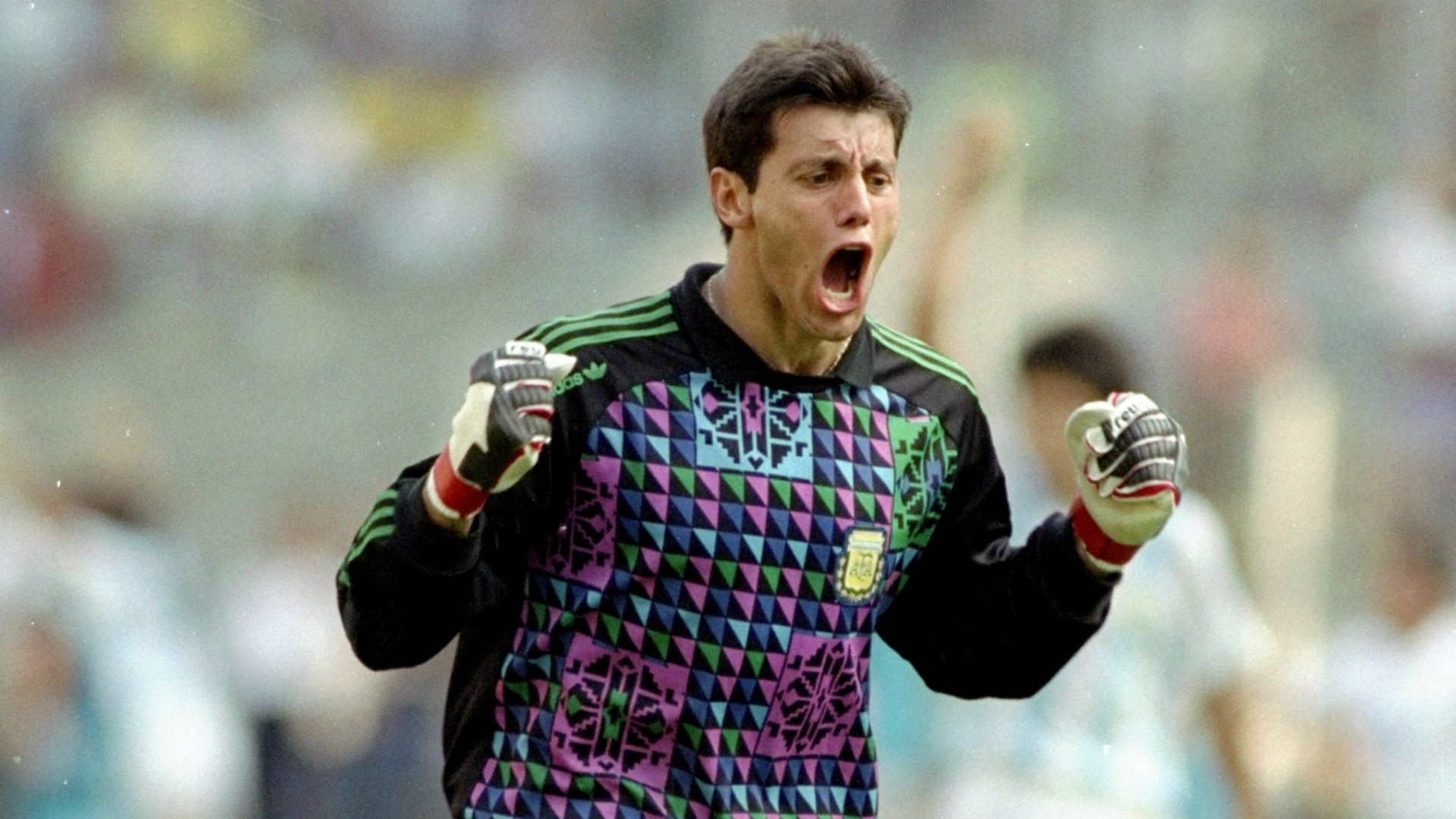
Before Emi Martinez became Argentina’s favourite penalty stopper, there was Sergio Goycochea. Second choice going into the tournament, Goycohea wore the number 12 shirt but became Argentina’s number one after an injury to Nery Pumpido during the second group game. He made the most of his chance to shine. Some crucial blocks and four saved penalties across two shootouts helped Argentina advance to the final and secured Goycochea’s status as a national hero. Naturally blessed with rugged good looks and a large muscular frame, a beautifully patterned jersey combining pink, green and blue on a black base meant he was also the best dressed keeper at the 1990 World Cup. That shoulder placement of the Adidas logo was sublime.
3 – Mexico 1994

Jorge Campos is the man most associated with outrageous goalkeeper shirts and for good reason. Rather than entrust the likes of Nike or Umbro to kit him out, Campos designed his own shirts at both club and international level. He was a big fan of bright colours and arrowhead patterns and he often included his name on the front of his kits as well as the back. As if being a 168cm tall goalkeeper who wore the most blindingly colourful shirts in the game wasn’t enough to make him stand out, he also played as a striker, scoring 38 goals at club level across his career.
2 – Colombia 1990
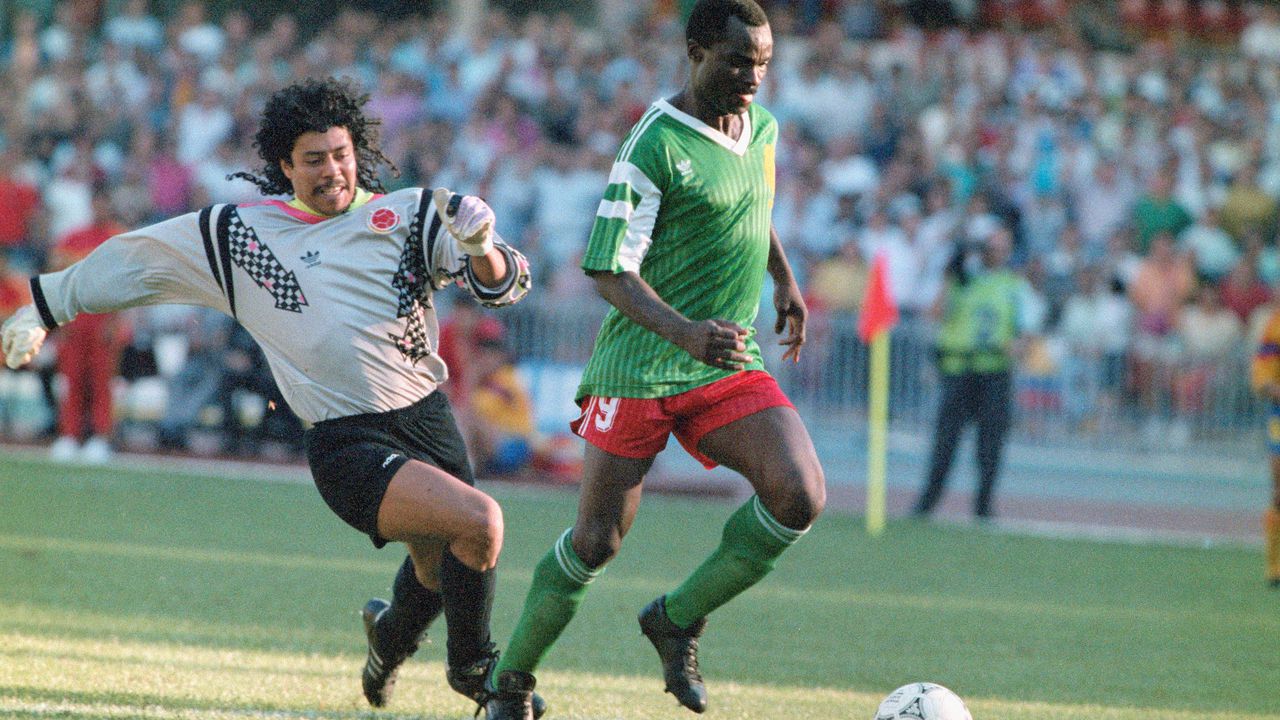
Rene Higuita is the shining example that all aspiring maverick goalkeepers should look up to. Even if you’ve never seen his scorpion kick or attempts at charging upfield with the ball at his feet, a picture says a thousand words. What you see is what you get with El Loco. His wild mane of curly hair was wonderfully complemented by a host of vibrant jerseys across his career, none finer than the one he wore against Cameroon at Italia 90.
Dressed in a silver shirt with neon pink and green accents, black chequered arrows and shoulder pads, the Colombian looked like the instructor of a best-selling fitness vhs as he received the ball outside his area. Roger Milla was quick to tackle him and score the winner for Cameroon, but at least Higuita and managed to fit in a short but intense workout as he chased Milla back to the goalmouth.
1 – Japan 1998

Japan’s outfield players had some nifty flame graphics on the end of their sleeves at the 1998 World Cup, but they were made look like amateur pyrophiles by their goalkeeper, Yoshikatsu Kawaguchi. His black shirt was completely engulfed by red, orange and yellow flames, easily winning him the honour of the best shirt at the tournament. That really is something, considering the amount of fantastic kits on show that year, but Kawaguchi might have been willing to give up his stunning jersey in exchange for Japan getting some points on the board.
They lost all three games, which probably took some of the shine off having really cool kits. On the other hand, the legacy of those shirts will live on for a long time in lists like this one, so at least there’s that.

